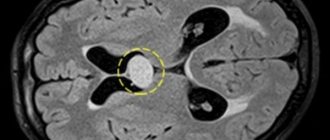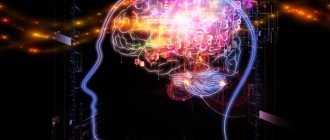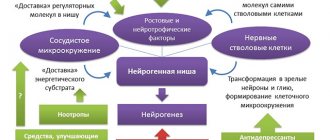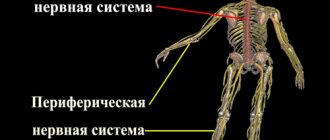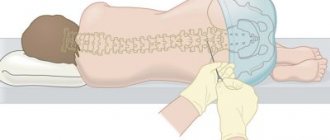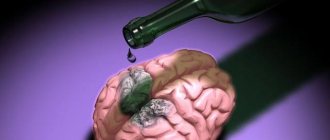Method for treating a soft spot in the brain
(04 A 61 V 0 STATE INVENTIONARY SCST USSR COMMITTEE OF DISCOVERIES 3." b.ch."3 tggt - - 1. 1 L 4. l 1 1 DESCRIPTION OF INVENTIONS D SECOND CERTIFICATE I (54) C 110 SUBJECT TO TREATMENT OF THE BRAIN (57 ) The invention not, but specifically to n, allows to reduce the radio frequency due to the shock of the brain matter with pressure at a rarer rate (2 (2 28-1 IA OF SOFTENING FOCUS regarding irochir injuries 9. Bulletin. R 30th Medical Institute named after N.ovnikov.V. and 111 Integral principles for the diagnosis and treatment of trauma hematomas and cerebral trauma and complex medicine and stomatology A, Semashkorgy. Capable of softening submachine gs with a softener - In conclusion, diagnostics of the closed part 982, p. , 12-0.2 softened so that the level of rare brain matter is up to the edge of the substance. , the margin of beating is less and an accuracy of 0.12-0 is achieved, preventing injury due to the mouth of the mouth.
They give anesthesia. Under aseptic conditions, novocaine blockade of the sinocarotid zone is performed on the side of the affected hemisphere (40-50 ml of a 0.25-0.5 solution of novocaine is injected into the area of the fork of the common carotid artery), and craniotomy is performed. The area of softening of the corresponding hemisphere is exposed. The depth of softening of the brain substance is determined by changes in the elasticity of brain tissue. kgf/cm r and m 28 l The patient's brain - constriction of the petherium, x On the angiogram and the middle one, the characteristic for the temporal lobe of the child was operated on with 40 ml of 0.5 caine in the area of the carotid artdena trepanacine-temporal about the brain values \u200b\u200bof the abdomen 1) 4239440 2) 26 ,03.8 (46) 15.08.8 (71) Moscow logical and (72) L.D., Byk (53) 616.831 (56) Zotov R Basic for surgical intracranial crush injury and cerebrovascular accident. L., 6 and due to injury and swelling. Pain - Before the operation, the injected solution of the new fork of the right auricle on the neck. Produced a skull in the right forehead. In the area of the bruise, consciousness cleared up, the patient became active, preoperative disorders in the neurological status not only did not increase, but regressed within 4 days. The patient was discharged without neurological disorders. 3 15002 b softening of the succulent lobe. Subpial aspiration of the white matter of the temporal lobe was performed under a vacuum pressure in the suction system of up to 0.20 kgf/cm to a depth of 4-4.5 cm in the area of identified softening of the brain. 11 After such a gentle and at the same time complete removal of the softened brain matter, there was no bleeding and there was no wound to the brain, the brain sunk in and began to pulsate clearly. The surgical wound is closed. In the postoperative period, in the first 2 days 15, the general condition was significantly improved. Formula of invention: Method of treating a softening focus of the brain by suctioning the brain matter, the difference being that, in order to reduce trauma, suction is carried out at a vacuum of suction system 0.12-0.20 kgf/cm. Co-author A. Baskov Technical editor A. Kravchuk Proofreader I. Muska Editor N. Shvydskaya Order 4792/b Circulation 643 Subscribed VNIIPI State Committee for Inventions and Discoveries at the State Committee for Science and Technology of the USSR 113035, Moscow, Zh., Raushskaya nab., 4/5 Production- Publishing house "Patent", Uzhgorod, Gagarina st., 101 View
Treatment of cerebrospinal gravis
Since it is almost impossible to completely eliminate the immediate cause of cerebrovascular accident, one should strive to minimize the consequences of the brain catastrophe that has occurred by increasing the stability of nerve cells and replenishing their energy reserves.
For this purpose:
- nootropics and neuroprotectors (encephabol, noofen, actovegin);
- vascular (vinpocetine, sermion);
- vitamin complexes (milgamma, complivit).
Depending on the presence of certain manifestations, symptomatic therapy is prescribed - analgesics, sedatives, psychostimulants, antiemetics. But no medications will help if a person does not eliminate the factors that cause exacerbation of cerebrasthenic syndrome.
To prevent these factors it is necessary:
- lead a healthy lifestyle;
- take breaks while working;
- a full night's sleep;
- quitting smoking, alcohol, strong tea and coffee;
- take walks in the fresh air more often;
- alternate mental work with physical work.
Radiation therapy
Radiation therapy in the treatment of brain tumors is necessary in the following cases: the patient cannot undergo surgery for health reasons or to prevent relapse after surgery. Chronic diseases of the cardiovascular system, pathologies in combination with surgery can cause irreparable harm to health. Surgery will not produce results in the later stages of the disease, and it can also be dangerous. The only effective method remains radiation therapy. This technique helps prevent the oncological process after removal of a cancerous tumor.
For each patient, the radiation dose is prescribed by the doctor individually. The impact on the tumor is carried out locally so that as little as possible of the radiation affects the tissues adjacent to the tumor. When prescribing radiation therapy, the specialist takes into account the size of the tumor, stage and location.
There are two types of such treatment:
- Brachytherapy. The technique is intended for patients undergoing inpatient treatment. Special substances are injected into the tumor to act on it from the inside. The dose of the radioactive isotope is precisely calculated to affect only the neoplasm and leave healthy cells unharmed.
- External radiation therapy. The course lasts several weeks with a break of 2 days. During treatment, the patient receives a large dose of radiation, which gradually kills the tumor.
Chemotherapy cannot be considered a panacea for cancer. Therefore, the question: whether brain cancer can be cured remains open. Despite its effectiveness, such an effect almost never excludes a negative impact on other human organs. When drawing up an individual course of treatment, the doctor also prescribes medications. These can be antibiotics, antimetabolites, drugs of the alkylating group. Irradiation is carried out intermittently, during which a specialist can examine the progress of treatment. The main danger of chemotherapy is the effect on the circulatory system and digestive tract.
Brain surgery is painful and dangerous
Mikhail Zemlyansky, neurosurgeon at the Department of Neurosurgery at the Morozov Children's City Clinical Hospital: “The vast majority of brain operations are performed under general anesthesia, which makes surgery painless.
The operation is associated with certain risks and complications, regardless of the country and clinic where surgical treatment is performed. The risks of surgical complications are approximately 3-5% and depend on the degree of involvement in the tumor process of functionally important areas of the brain (cortical representations of speech, limb movements, subcortical nodes, brain stem) and the great vessels supplying the brain.
Modern neurosurgery equipment - microscope, endoscopy, intraoperative navigation, neurophysiological monitoring - allows surgical treatment to be performed with maximum safety and radical tumor removal. Of course, the early postoperative period is accompanied by pain, which, however, can be successfully relieved with modern analgesics.”
Brain tumor is cancer
Enje Valiakhmetova, pediatric oncologist at the National Scientific and Practical Center for Neurosurgery named after. Academician N.N. Burdenko: “In fact, it is incorrect to call most primary brain tumors cancer, because such tumors are a complex structure formed primarily from glial cells, less often neuronal ones. While cancer is a tumor that is formed from epithelial tissue cells. In addition to cancer, among malignant neoplasms there is also sarcoma, a tumor formed from connective tissue cells.”
Mechanism of disease
Cholesterol accumulates in the vascular system, which is responsible for transporting blood between body systems. For this reason, some nutritionists recommend reducing your intake of cholesterol-rich foods.
Normal blood supply through clogged vessels becomes impossible, which stimulates the development of chronic atherosclerosis, which is why veins become blocked. The transport functionality of the vascular system “breaks down”.
The body begins to experience oxygen starvation, and this is a powerful stress for everything that is in the human body - organs, brain, tissues.
Moreover, for the brain to the greatest extent, since it consumes oxygen more than other organs, such starvation becomes disastrous for it.
Hair will not grow back after chemotherapy
Enje Valiakhmetova : “As a rule, hair begins to grow back within a month after the end of treatment. Over the course of a year, they grow by an average of 15-20 cm. In some cases, hair growth resumes later. This, for example, happens with high-dose chemotherapy, but the process itself is still restored.
Why does hair fall out at all? Among antitumor chemotherapy drugs, the majority are cytostatics. They affect rapidly dividing cells, which, in addition to the tumor, include hematopoietic cells of the bone marrow, cells of the hair follicles and mucous membranes.”
I can't get better if I don't have enough money
Mikhail Laskov, oncologist, hematologist, founder and managing partner of the Outpatient Oncology and Hematology Clinic and the University Headache Clinic: “Money, of course, greatly helps to increase the speed and quality of diagnosis, to obtain the best and most modern drugs, but to say that in the absence of money it is impossible to recover would be a gross exaggeration.
It would be more correct to say this: most types of cancer at an early stage can be cured for free, but most types of cancer at an advanced stage are difficult to cure even for money. No amount of money can replace a quick and focused personal immersion of the patient into the problem. The chances of recovery or maximum prolongation of life with a good quality also greatly depend on this.”
Symptoms of cerebrospinal gravis
Depending on the predominant clinical manifestations, the following types of cerebrasthenic syndrome are distinguished:
1. Asthenohyperdynamic:
- fussiness;
- irritation for any reason;
- aggression (can even reach the use of physical force);
- restlessness;
- physical activity.
2. Asthenoadynamic or atenopathic:
- constant drowsiness, even after a normal night's sleep;
- lethargy;
- indifference;
- indifference to everything that happens around;
- laziness;
- inactivity;
- inactivity.
3. Asthenodysthymic or mixed variant, which combines the characteristics of other types. This is characterized by frequent mood swings, a rapid transition from apathy to aggression, and tearfulness. General symptoms:
- headache;
- dizziness;
- nausea, vomiting;
- disorders of the stomach and intestines (constipation, causeless diarrhea);
- vegetative manifestations: tremor of the eyelids, sweating of the skin;
- poor tolerance to heat and changes in atmospheric pressure.
Cerebroasthenia has its own periods of exacerbations and remissions, during which symptoms can either disappear altogether or be present at a minimal level. In some patients, remissions as such are not observed, and they constantly feel symptoms of exhaustion of the nervous system. Exacerbations are clearly associated with the presence of provoking factors - changes in the usual daily routine, lack of sleep, stress, increased mental and physical stress, bad habits.
Only the malignant tumor needs to be treated
Andrey Levashov, researcher at the Department of Chemotherapy for Hemablastosis with the Neuro-Oncology Group of the Russian Oncology Research Center named after. N.N. Blokhina: “Of course, treatment should also be carried out in patients with benign tumors, since the consequences of benign tumors can also be fatal.
Even if the tumor is benign and grows slowly, but it puts pressure on the brain structures that regulate the vital functions of the body, it is life-threatening. Moreover, in the absence of proper treatment, benign neoplasms can change their nature and acquire malignant features.”
